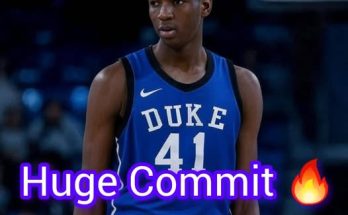The Seattle Mariners are playing their best baseball of the season at exactly the right time, charging up the standings with a scorching stretch that has seen them win nine of their last ten games since the trade deadline. The timing of this surge could hardly be more dramatic. The American League West race, which not long ago seemed to be slipping out of reach, has been completely reshaped. The Mariners have seized the top AL Wild Card position and now sit just a single game behind the division leader, creating an atmosphere of optimism and urgency in the Pacific Northwest. Yet despite this remarkable run, the national sports media rankings released this week have been surprisingly unmoved, as if Seattle’s surge is being met with polite applause rather than full-throated recognition. For a fan base starved for consistent respect on the national stage, it’s a familiar frustration: the Mariners are delivering results on the field, but the perception battle is far from won.
The trade deadline was a critical moment in the Mariners’ season. Instead of overhauling the roster or selling off future pieces, the front office opted for targeted improvements and, more importantly, placed its faith in the roster already in place. This bet has paid off in dramatic fashion. Since then, the Mariners have combined solid pitching performances with timely hitting, finding ways to win both tight contests and more comfortable matchups. The pitching staff, already among the best in the league statistically, has continued to limit opponents, while the offense—often criticized for inconsistency earlier in the year—has found new life. The balance between the two has been key to this run, with different players stepping up on different nights to carry the load.
Seattle’s ability to adjust midseason without panicking is a testament to the maturity of the roster and the belief within the clubhouse. Veterans have led the way, providing stability and calm, while younger players have embraced the moment, treating the high-stakes games as opportunities rather than burdens. This combination of experience and energy is a dangerous one for opponents. It’s the kind of blend that can sustain a team through the grind of late August and September, when every inning can swing playoff odds dramatically.
Despite these undeniable accomplishments, the Mariners’ national perception remains frustratingly static. Power rankings from several major outlets barely nudged Seattle up, often citing reasons that seem more rooted in past narratives than current performance. It’s as though analysts are waiting for the other shoe to drop, hesitant to acknowledge that this version of the Mariners might be for real. For Seattle fans, this feels less like objective caution and more like an ingrained habit—national voices giving the benefit of the doubt to larger-market or more historically successful franchises while the Mariners must prove themselves over and over again.
Part of the skepticism may stem from the nature of the Mariners’ offense earlier in the season. For much of the first half, run production was a glaring issue. Strikeouts were high, clutch hitting was inconsistent, and rallies often fizzled before they could do real damage. The turnaround in recent weeks has been remarkable, but the shadow of those struggles lingers in the minds of outsiders. Analysts may worry that the offensive spark is temporary, that once the adrenaline of the post-deadline push fades, Seattle could revert to its earlier habits. Yet the numbers in this recent stretch suggest otherwise. The Mariners are finding ways to produce runs in varied ways, from timely long balls to smart situational hitting, and that adaptability bodes well for sustaining success.
Pitching, meanwhile, has been a constant. Even when the offense sputtered earlier in the year, the starting rotation and bullpen kept the Mariners competitive. That hasn’t changed during the current run—in fact, it may have improved. Starters are going deeper into games, reducing strain on the bullpen, and relievers are coming through in high-pressure moments. The staff as a whole has a quiet confidence, trusting the defense behind them and leaning on a game plan that plays to each pitcher’s strengths. Opposing teams know that when they face Seattle, runs will be hard to come by, and in a postseason environment, that’s a potentially decisive advantage.
Another factor in the Mariners’ national profile—or lack thereof—is geography. Playing in the Pacific Northwest means late start times for much of the country, and even in the age of instant highlights, there’s a difference between catching a few clips and watching a full game. When a team like the Mariners plays on the East Coast, they’re often treated as a curiosity; when they dominate in their home time zone, large portions of the national audience simply aren’t tuned in. This invisibility has been a recurring obstacle for Seattle, one that makes it harder for their momentum to penetrate the broader baseball conversation.
Still, the players and coaching staff have shown little concern for where they land on arbitrary weekly rankings. In interviews, the message is consistent: control what you can control, win ballgames, and the rest will follow. That’s not to say they’re oblivious—athletes at this level are always aware of how they’re perceived—but the team seems more focused on keeping its internal standards high rather than chasing external validation. That mindset is not only healthy but necessary for navigating the emotional roller coaster of a playoff race.
For fans, however, the lack of national recognition stings. After all, following a team through the grind of a long season, enduring the highs and lows, builds an emotional investment. When that team finally hits its stride, there’s a natural desire to see the achievement acknowledged beyond the local market. Mariners fans aren’t asking for exaggerated praise—they’re asking for fair acknowledgment of what the standings and win-loss record clearly show. That the national media has been slow to grant it feels less like objective analysis and more like an oversight.
Looking ahead, the Mariners’ path is both promising and perilous. Being just a game back in the division means they control much of their own destiny, but it also means the margin for error is slim. The upcoming schedule features a mix of divisional clashes and matchups against other playoff contenders, the kind of games where small mistakes can be magnified. The Mariners will need to sustain their focus and intensity, leaning on the depth of their roster to navigate inevitable injuries, slumps, and unexpected challenges.
In some ways, being underestimated might work to their advantage. If opponents buy into the national narrative that Seattle’s success is temporary, they might not prepare for the reality of facing a team that is firing on all cylinders. Underestimation can be a subtle form of competitive edge, and if the Mariners can continue to pile up wins, the rankings will eventually have no choice but to adjust. Results speak louder than perception, and a deep postseason run would erase any lingering doubt.
The bigger question is whether the Mariners’ surge can last into October. History offers both cautionary and encouraging examples. Hot teams can ride momentum deep into the playoffs, but sustaining excellence over two months requires resilience, adaptability, and more than a little luck. The Mariners’ current form suggests they have the pieces to make it happen: a dominant pitching staff, an offense finding its rhythm, and a clubhouse culture built on trust and accountability. Whether that translates to postseason success will depend on their ability to keep this balance intact when the pressure ratchets up.
For now, the Mariners have made their statement on the field. Nine wins in ten games, a leap into the top AL Wild Card spot, and a closing gap in the division are tangible achievements. If the national rankings have yet to fully recognize it, that’s their oversight. In Seattle, the focus will remain on the next game, the next series, and the ultimate goal of not just making the playoffs, but making noise once they get there. Respect from the outside world would be nice, but the truest validation will come in the standings—and the Mariners are already speaking that language fluently.
If Seattle continues on this trajectory, the conversation will inevitably shift. Rankings will catch up, analysts will reassess, and the same national outlets that hesitated to give them credit may be forced to acknowledge what the standings already show: the Mariners are one of the most dangerous teams in baseball right now. Until then, they’ll keep doing what they’ve done best over this incredible stretch—winning ballgames, proving doubters wrong, and quietly transforming the playoff picture in the American League. And if that transformation continues, the rest of the baseball world won’t be able to ignore them for much longer.



